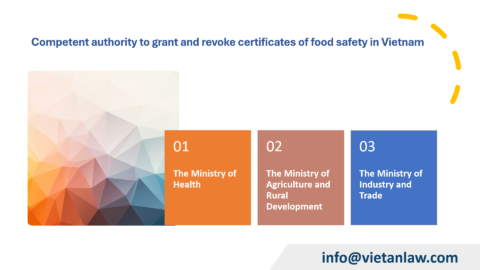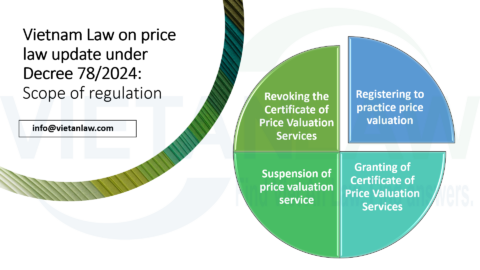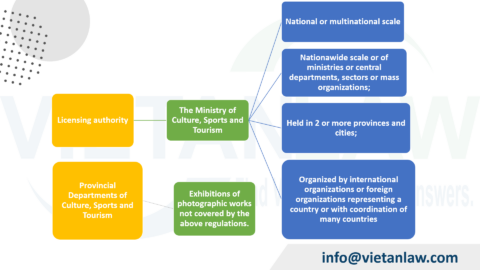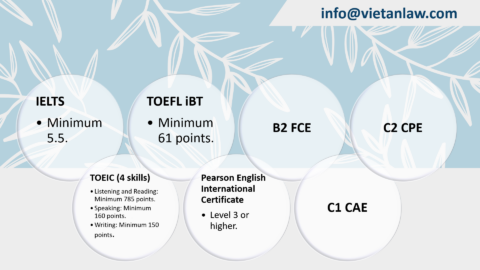On July 28, 2023, the State Bank of Vietnam issued Circular 09/2023/TT-NHNN guiding the implementation of several articles of the Law on Prevention and Combat of Money Laundering.
Basic information about Circular 09/2023/TT-NHNN guiding the implementation of several articles of the Law on Prevention and Combat of Money Laundering includes:
The scope of Circular 09/2023/TT-NHNN regulates:
In addition, the Circular’s applicable subjects include:
The regulation of the scope of regulation and subjects of application aims to build a legal system for money laundering prevention and combat under international requirements and standards on prevention and combat money laundering.
Based on the results of assessing and updating money laundering risks according to the provisions of Article 3 of Circular 09/2023/TT-NHNN, accordingly, the reporting subject develops and promulgates a risk management process for money laundering. money laundering at reporting subjects. The money laundering risk management process must be expressed step by step by the scale, scope, and specific activities of the reporting entity to manage money laundering risks. The money laundering risk management process includes the following contents:
Specifying the money laundering risk management process step by step under the scale, scope and specific activities of the reporting subject aims to clarify the legal basis to ensure money laundering risks management from competent authorities, avoiding errors.
The Circular regulates clients with high levels of money laundering risk, in addition to applying identification measures based on the Law on Prevention and Combat of Money Laundering and the Government’s Decree detailing several articles of the Law on Prevention and Control of Money Laundering. , anti-money laundering reporting subjects must apply enhanced measures, including:
Enhanced assessment measures for high-risk clients are specified in Article 3 of Circular 35/2013/TT-NHNN, while Circular 09/2023/TT-NHNN is specified in Clause 5, Article 4, and is Regulation is one of the contents of the money laundering risk management process and client classification according to money laundering risk level. In addition, evaluation measures are also specified more specifically and clearly with 6 measures, while Circular 35/2013/TT-NHNN points out 4 measures (with approval from higher management levels at least at one level; Collect additional information about clients who are individuals and organizations; Closely monitor transactions of high-risk clients and update information periodically every 6 months or when reporting object knows that client information has changed).
With regulations on enhanced measures for clients with high levels of money laundering risk, it can be seen that Circular 09/2023/TT-NHNN pays special attention to updating, collecting, and verifying client information based on the requirements of Recommendation 10 on updating client information, the Financial Action Task Force on Money Laundering (FATF) requires financial institutions to perform client identification and to regulate financial institutions clearly in law and each country can determine how to impose specific client identification obligations and the measures to be taken in the event of failure to collect client information. Accordingly, it is necessary to strengthen supervision and update information for clients with high money laundering risks to prevent illegal acts, and promptly detect and review. This is a necessary regulation in the context of increasingly sophisticated and frequently changing money laundering activities.
If the previous Circular 35/2013/T-NHNN stipulates the suspicious transaction reporting regime only stops at quoting articles of the Law on Prevention and Combat of Money Laundering and does not have specific instructions, then Circular 09 / 2023/TT-NHNN has specific guidance on suspicious transaction reporting regime including:
Currently, the regulations on analyzing and handling suspicious transaction information of the State Bank in the current Law on Prevention of Money Laundering are not clear and do not demonstrate the basic business processes in information analysis. information from receiving information, analyzing information according to professional processes, and transferring information on money laundering prevention and combat. In addition, these regulations do not cover all the key tasks in the operations of the focal unit performing the function of Anti-Money Laundering under the State Bank such as supervision, warning, and information exchange with domestic and foreign agencies and units in implementing anti-money laundering work. Continue to review and carefully consider regulations on reporting suspicious transaction results to improve them to minimize limitations in applying regulations into practice.
However, Article 6 of Circular 09/2023/TT-NHNN guiding the implementation of regulations on reporting suspicious transactions somewhat clarifies and ensures accurate implementation.
Regarding the reporting regime for electronic money transfer transactions, a notable point in Circular 09 /2023/TT-NHNN is that electronic money transfers of 500 million VND or more must report transactions differently from Circular 35/2013. /TT-NHNN does not have specific regulations on how much money must be reported for transactions in electronic money transfers. At the same time, Circular 09/2023/TT-NHNN stipulates specific cases in which reporting subjects must carry out the responsibility to collect information in Clause 3 of this Article and report to the agency performing the functions and tasks of the department. Anti-money laundering using electronic data according to the provisions of Clause 1, Article 10 of this Circular when delivering electronic money transfers. Cases include:
In addition, if Circular 35/2013/TT-NHNN stops at clarifying the content of the report, including information about the organization issuing the money transfer order; organizations serving beneficiaries and individuals, money transfer organizations, and beneficiary individuals and organizations, Circular 09/2023/TT-NHNN stipulates that the content of electronic money transfer reports must include the following information: the originating and beneficiary financial institution; individuals participating in electronic money transfer transactions; organizations participating in electronic money transfer transactions; Information about transactions. Accordingly, Circular 09/2023/TT-NHNN has more specific regulations than such regulations based on FATF Recommendation No. 16 on electronic money transfers to ensure that basic information Records of the originator and beneficiary of electronic money transfer transactions are always available and immediate, serving the work of reviewing cash flows to prevent money laundering. At the same time, to detect and prevent criminals from using electronic money transfers to transfer illegal funds.
Circular 09/2023/TT-NHNN regulates the implementation responsibilities of the Chief of Office, Chief of Bank Inspection and Supervision, Heads of Agencies performing the functions and tasks of preventing and combating money laundering, Heads of agencies unit of the State Bank of Vietnam and the reporting object is the organization responsible for organizing the implementation of this Circular. At the same time, if there are any problems during the implementation and implementation process, organizations, individuals, and reporting subjects can report them to the State Bank of Vietnam (through the agency performing the functions of money laundering prevention) for guidance. The regulation aims to ensure the implementation responsibility of relevant units in the State Bank and reporting subjects according to the provisions of the law on prevention and combat money laundering.
Clients who need advice on state banking law, and anti-money laundering law, please contact Viet An Law Firm for the best support.






Hanoi Head-office
#3rd Floor, 125 Hoang Ngan, Hoang Ngan Plaza, Trung Hoa, Cau Giay, Hanoi, Vietnam

Ho Chi Minh city office
Room 04.68 vs 04.70, 4th Floor, River Gate Residence, 151 – 155 Ben Van Don Street, District 4, HCM, Viet Nam
SPEAK TO OUR LAWYER
English speaking: (+84) 9 61 57 18 18 - Lawyer Dong Van Thuc ( Alex) (Zalo, Viber, Whatsapp)
Vietnamese speaking: (+84) 9 61 37 18 18 - Dr. Lawyer Do Thi Thu Ha (Zalo, Viber, Whatsapp)
